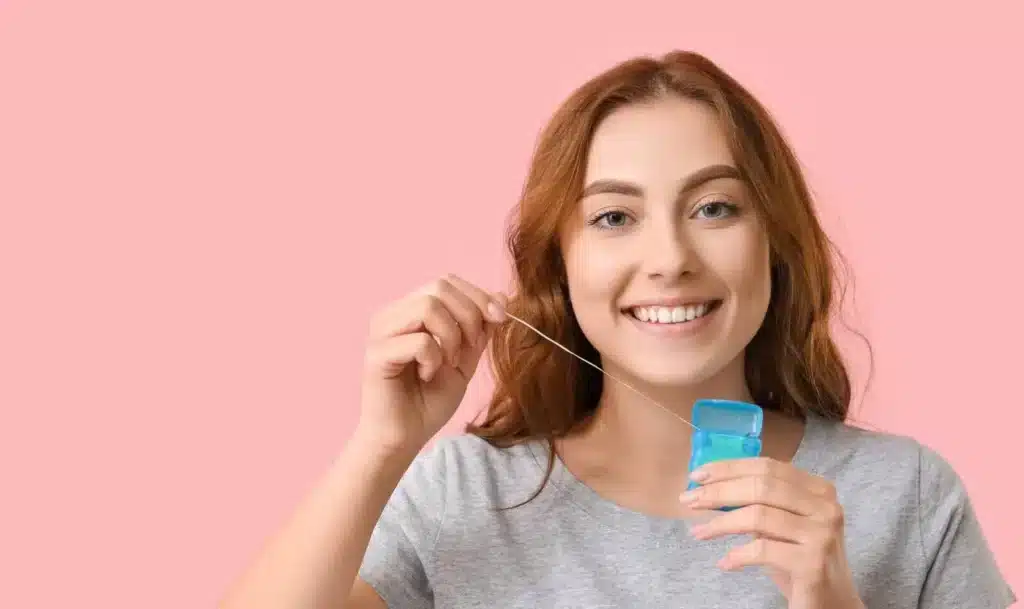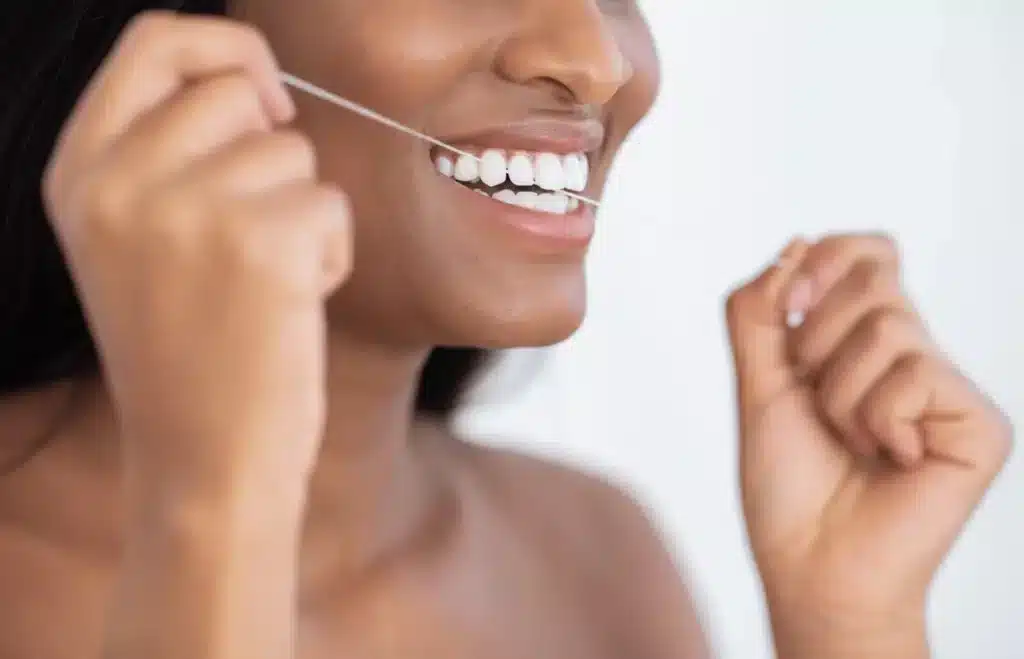Are you aware of the proper technique for flossing your teeth? If not, don’t worry! We’ve got you covered. This blog post guides you through all steps to floss your teeth correctly. So, let’s dive in and discover the right way to floss for excellent oral hygiene.
Technique to Floss
Follow the steps to floss your teeth accurately and maintain a fresh breath because flossing is crucial for a healthy mouth.
1. Cut Sufficient Floss
- Cut approximately 18 to 24 inches of floss from the dispenser.
- While it may seem considerable, having more floss is better than running out mid-flossing.
- An adequate length ensures you can floss each tooth with a fresh section of floss, maintaining cleanliness and effectiveness.

2. Tie the Floss Between Your Fingers
- Take most of the floss and wrap it around one of your index or middle fingers.
- Wind the remaining portion of the floss around the same finger on your other hand.
- Hold the floss firmly between your thumbs and index fingers, creating a taut section to work with during flossing.

3. Carefully Guide the Floss Between Your Teeth
- Begin by gently sliding the floss between your teeth using a back-and-forth motion.
- Ensure the floss reaches around the base of each tooth, going beneath the gum line.
- Avoid snapping the floss through abruptly, as this can be harsh on the gums and may cause discomfort or injury.

4. Floss Around Each Tooth
- Curve the floss around each tooth, forming a C shape.
- Gently move the floss up and down against the side of the tooth, ensuring it reaches below the gum line.
- Repeat this process for the rest of your teeth, one by one, giving attention to each tooth.
- Remember to include your rear molars in the flossing routine, as they are often overlooked but equally crucial for thorough oral hygiene.

5. Discard the Floss and Rinse Your Mouth
- Proper floss disposal is crucial for maintaining good oral hygiene.
- Avoid reusing the same piece of floss, as it can reintroduce bacteria and debris into your mouth.
- Instead, discard the used floss by wrapping it around your fingers and throwing it away.
- After flossing, rinse your mouth with water or mouthwash to wash away any remaining food particles and promote a fresh, clean feeling.

Conclusion
You can significantly enhance oral hygiene by mastering the correct steps to floss your teeth. Remember to schedule regular visits to your dentist to maintain the health of your teeth and gums.
FAQs
Should we floss before or after brushing our teeth?
According to studies, it is recommended to floss before brushing your teeth. This order of oral care is more effective in removing plaque and combating bad breath. Additionally, flossing before brushing allows for better penetration of fluoride from toothpaste into the spaces between your teeth.
Are there any alternatives to flossing?
For those who are not fond of traditional flossing, there are alternative options available, such as:
Water flossers
Dental floss picks
Interdental brushes


